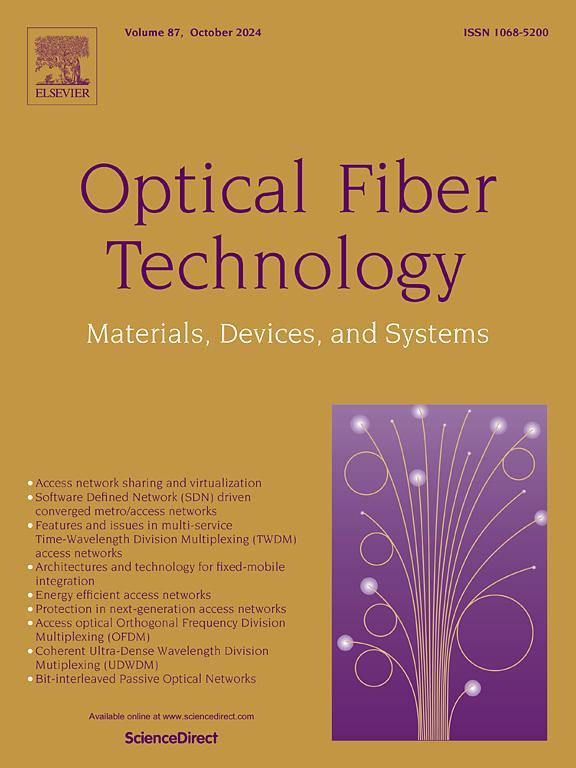Capacity-aware resource provisioning by prioritizing the highest capacity band in next-generation multi-band elastic optical networks
IF 2.7
3区 计算机科学
Q2 ENGINEERING, ELECTRICAL & ELECTRONIC
引用次数: 0
Abstract
The emergence of next-generation multi-band elastic optical networks (MB-EONs) marks a paradigm shift in addressing the escalating bandwidth demands of future communication systems. While conventional C-band provisioning is nearing its spectral saturation point, expanding into additional spectral bands such as L, S, and E bands provides an avenue for scalable capacity enhancement. However, utilization of these heterogeneous spectral resources necessitates efficient provisioning strategies. This paper proposes a capacity aware-resource provisioning technique that prioritizes spectral bands based on their spectral capacity, favoring the highest-capacity band during allocation unlike traditional provisioning methods in the literature which prioritize the C-band for resource provisioning which has least resource availability. Through comprehensive simulation-based evaluation, we show that band sequencing strategies can substantially affect the network performance. Simulations have been conducted on NSF and USNET topologies by considering the following performance metrics: request blocking probability (RBP), bandwidth blocking probability (BBP), spectral efficiency (SE), total bits transmitted, band utilization distribution (BUD) and band resource allocation time. Simulation results demonstrate that our strategy significantly outperforms baseline models in terms of blocking probabilities with a least reduction of RBP and BBP by 0.6% and 2.4% respectively.
在下一代多波段弹性光网络中,优先考虑最高容量频带的资源分配
下一代多波段弹性光网络(mb - eon)的出现标志着解决未来通信系统不断升级的带宽需求的范式转变。当传统的c波段供应接近其频谱饱和点时,扩展到L、S和E波段等额外的频谱波段为可扩展的容量增强提供了一条途径。然而,利用这些异构频谱资源需要有效的供应策略。本文提出了一种容量感知资源分配技术,该技术根据频谱容量对频段进行优先分配,在分配时优先考虑容量最高的频段,而传统的资源分配方法则优先考虑资源可用性最低的c波段。通过基于仿真的综合评估,我们发现频段排序策略对网络性能有很大的影响。通过考虑以下性能指标:请求阻塞概率(RBP)、带宽阻塞概率(BBP)、频谱效率(SE)、传输总比特数、频带利用率分布(BUD)和频带资源分配时间,在NSF和USNET拓扑上进行了仿真。仿真结果表明,我们的策略在阻塞概率方面明显优于基线模型,RBP和BBP分别减少了0.6%和2.4%。
本文章由计算机程序翻译,如有差异,请以英文原文为准。
求助全文
约1分钟内获得全文
求助全文
来源期刊

Optical Fiber Technology
工程技术-电信学
CiteScore
4.80
自引率
11.10%
发文量
327
审稿时长
63 days
期刊介绍:
Innovations in optical fiber technology are revolutionizing world communications. Newly developed fiber amplifiers allow for direct transmission of high-speed signals over transcontinental distances without the need for electronic regeneration. Optical fibers find new applications in data processing. The impact of fiber materials, devices, and systems on communications in the coming decades will create an abundance of primary literature and the need for up-to-date reviews.
Optical Fiber Technology: Materials, Devices, and Systems is a new cutting-edge journal designed to fill a need in this rapidly evolving field for speedy publication of regular length papers. Both theoretical and experimental papers on fiber materials, devices, and system performance evaluation and measurements are eligible, with emphasis on practical applications.
 求助内容:
求助内容: 应助结果提醒方式:
应助结果提醒方式:


